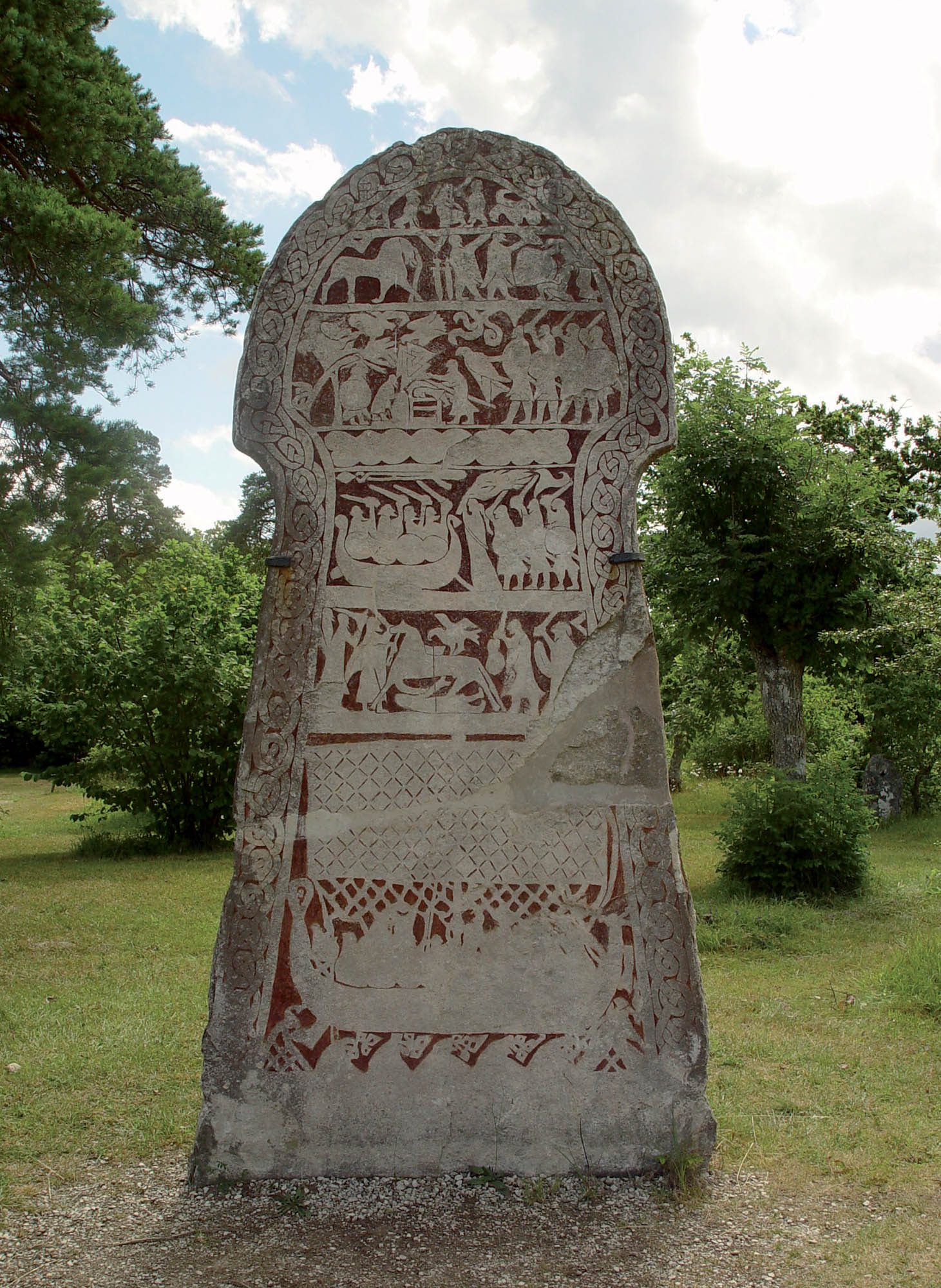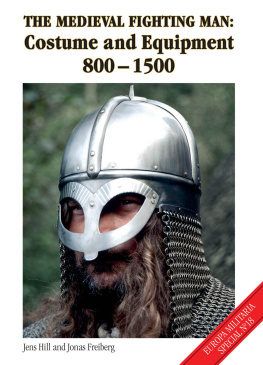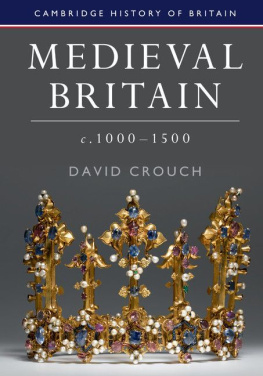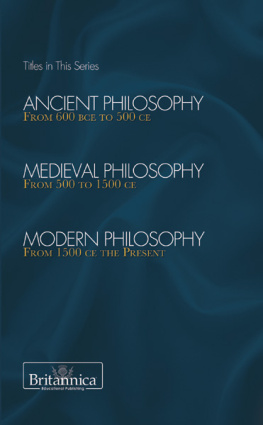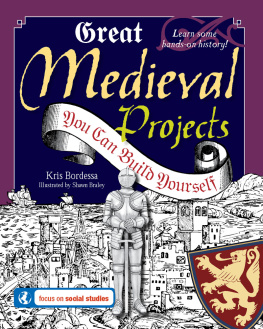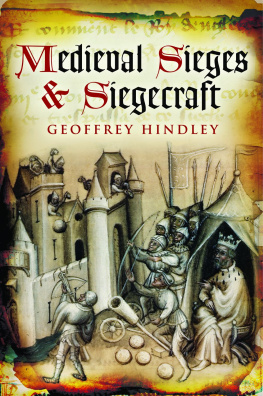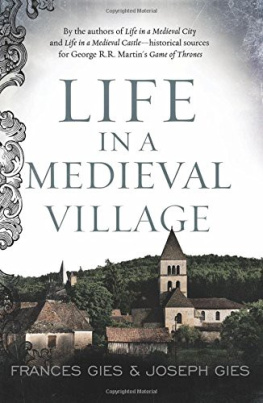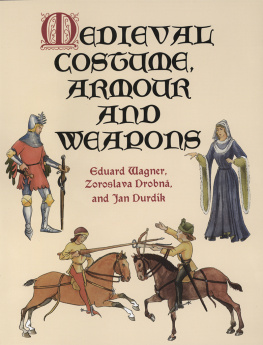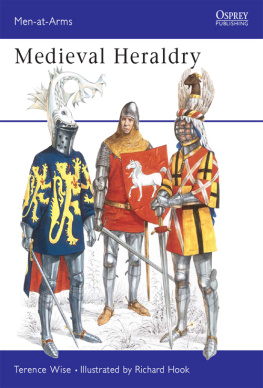THE MEDIEVAL FIGHTING MAN:
Costume and Equipment
800 1500
Jens Hill and Jonas Freiberg

THE CROWOOD PRESS
First published in Germany as
Krieger: Waffen und Rstungen im Mittelalter 8001500
By VS-BOOKS, Postfach 20 05 40, 44635 Herne, Germany
Torsten Verhlsdonk 2013
This edition published in 2015 by
The Crowood Press Ltd
Ramsbury, Marlborough
Wiltshire SN8 2HR
www.crowood.com
This e-book first published in 2015
English edition The Crowood Press Ltd 2015
All rights reserved. No part of this publication may be reproduced or transmitted in any form or by any means, electronic or mechanical, including photocopy, recording, or any information storage and retrieval system, without permission in writing from the publishers.
British Library Cataloguing-in-Publication Data
A catalogue record for this book is available from the British Library.
ISBN 978 1 78500 010 2
Contents
Illustration credits
All pictures were taken by Carl Schulze and Torsten Verhlsdonk with exception of:
: Image from the Maastrichter Book of Hours, Stowe 17 f.244, British Library, London
: Picture by Jrgen Howaldt, of the picture stone Hammers I, today displayed in the Bunge open air museum, Gotland, Sweden
: Mounting of cutout from MS 1006677 f. 133v, Koninklijke Bibliotheek van Belgi, Brussels, Belgium
: Stuttgarter Psalter, Cod.bibl.fol.23 158v, Wrttembergian State Library, Stuttgart
: Image of the picture stone from Etelhem, now in the Fornsalen Museum Visby, Gotland, Sweden
: Saxons, Jutes and Angles crossing the sea towards England. Taken from Miscellany of the Life of St Edmund, Bury St Edmunds, England, MS M736 fol.7r, Pierpont Morgan Library New York, USA
Bottom picture by Thorsten Piepenbrink
: Image from Tractatus in Evangelium Johannis, Tours BM MS 0291 f.039
: Image depicting the capture of Carthage taken from Chroniques de France ou de St Denis, Royal 16 G VI f.441, British Library, London
: Image from The Westminster Psalter, Royal 2 A XXII f.220r, British Library, London
Bottom picture taken by Chavi-Dragon
: Mounting of cutouts taken from the Winchester Bible, MS M 619v, Pierpont Morgan Library, New York, USA
: Image of the battle of Roncevaux taken from Chroniques de France ou de St Denis, Royal 16 G VI f.178, British Library, London
: Image of the siege of Vezelay Abbey taken from Chroniques de France ou de St Denis, Royal 16 G VI f. 328v, British Library, London
: Bottom image, of a battle for a bridge over river Seine, taken from Chroniques de France ou de St Denis, Royal 20 C VII f.137v, British Library, London
: Image Bellum/War, taken from Omne Bonum (Absolucio-Circumcisio), Royal 6 E VI f.183v, British Library, London
: Image of Hector slaying Patroculus taken from Troy Book, Royal 18 D II f.66v, British Library, London
: Image of Gideons Battle taken from Chronique of Baudouin dAvennes, Royal 18 E V f.54v, British Library, London
Preface
For the purposes of this book, a fighting man is considered to be anyone who had the freedom and the legal right to bear arms, while a man-at-arms is a later medieval armoured cavalryman, whether of knightly or lower social status.
In medieval times the individual often needed to defend his life, his family and his property. Mercenaries earned their living by hiring out their skills, while feudal noblemen regularly mustered their men-at-arms and their subordinate vassals and tenants to provide military service, even to the point of leading them on Crusades to the Holy Land and elsewhere. In the later medieval period the growing cities required their citizens to take up arms as militia in defence of the community during times of external threat.
The sources upon which we have drawn for the reconstructions illustrated in this book are many and various, since each usually provides only partial information. The archaeological evidence for medieval material culture may come from single burials or mass graves, from the sewers or wells of castles and cities, less often from known battlefields, and occasionally from chance finds scattered across the countryside. Fortunately, great numbers of later medieval weapons and pieces of armour survived in the armouries of towns and castles, and are now displayed in museums all over the world. This physical evidence may be compared with iconography, and for the earlier centuries we are fortunate in having the illustrated manuscripts that were created in monasteries. The artists who painted these illuminations for ancient Biblical and other stories interpreted them in contemporary terms; rich in colour and detail, their work gives us precious information about the clothing and war gear of the artists own times. Each chapter of this book begins with an historical image, to show that the reconstructed warrior, armed trader, knight, man-at-arms or soldier is closely based upon historical sources.
The choices of materials, colours and patterns for reconstructed clothing are as close as possible to the real thing, but inevitably these can only be a matter of interpretation. Much knowledge of the necessary craft skills has been lost over time, and some materials are impossible to source today in appropriate quality. In the case of the early periods especially, original clothing is preserved only in fragments, and the cut of these garments can only be an educated guess based on the available iconography. All of the people portrayed in this book represent as closely as practically possible the appearance of times long past, achieved by studying all available sources, comparing the surviving examples, and experimenting with different craft techniques. This is an ongoing process driven by new documentary or archaeological discoveries, so such reconstructions undergo constant changes. Nevertheless, we have attempted to achieve a level of accuracy that can satisfy critical review by scientific historians.
Acknowledgements
A project such as this would have been impossible without the help of the persons shown in the photographs, and for each subject countless hours of research and reconstruction work were necessary. The authors and publishers wish to record their sincere thanks to all those who were willing to share their knowledge, and to give their time to pose for the photo-shoots. They are, in alphabetical order:
Bryan Betts, Andreas Bichler, Ralf Ebelt, Jonas Freiberg, Jens Hill, Ingo Kammeier, Christoph Ludwicki, Matthias Richter, Oliver Schlegel and the Archaeological Service of the Harz region in Quedlinburg, Gregor Schlgl, Burkhardt Schrder, Olaf Werner and the company I.G. Wolf eV.
Another debt is owed to Die Frderer eV for allowing us to use a harness made by Walter Suckert from the stock of the Landshuter Hochzeit 1475; this was made possible by Karl Heinrich Deutman of the Adlerturm Museum in Dortmund, Germany.
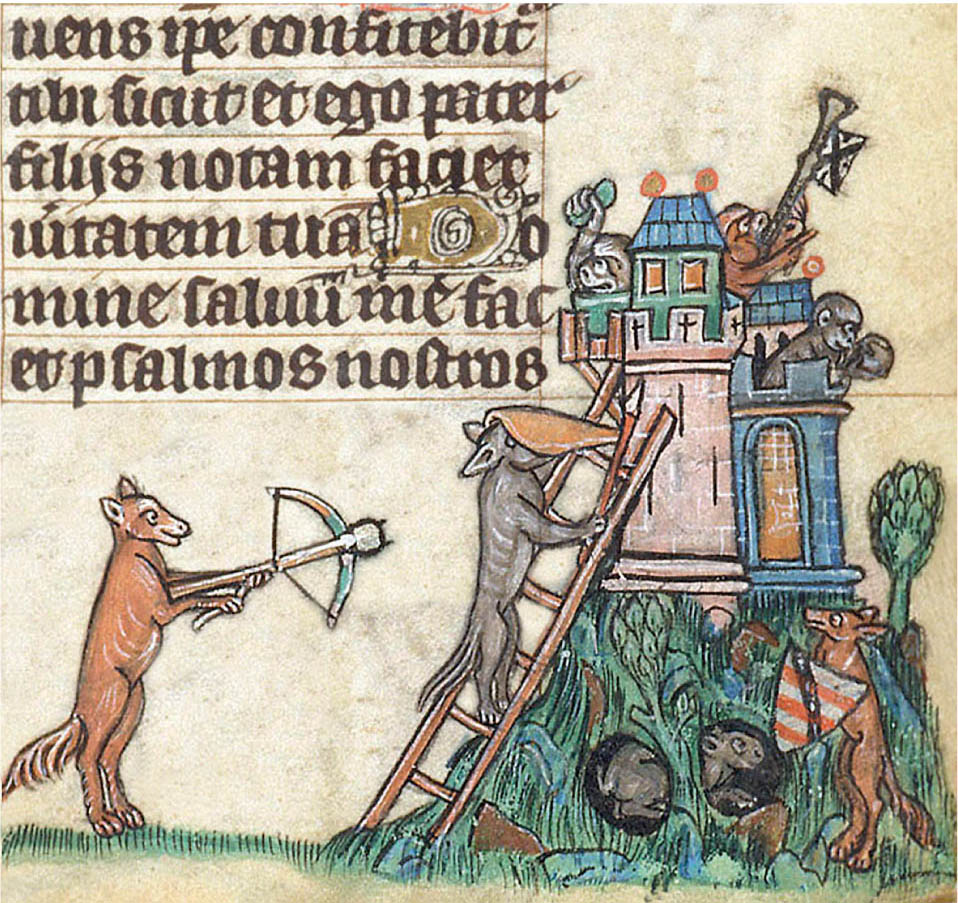
Viking Warrior
8th to 9th Century
